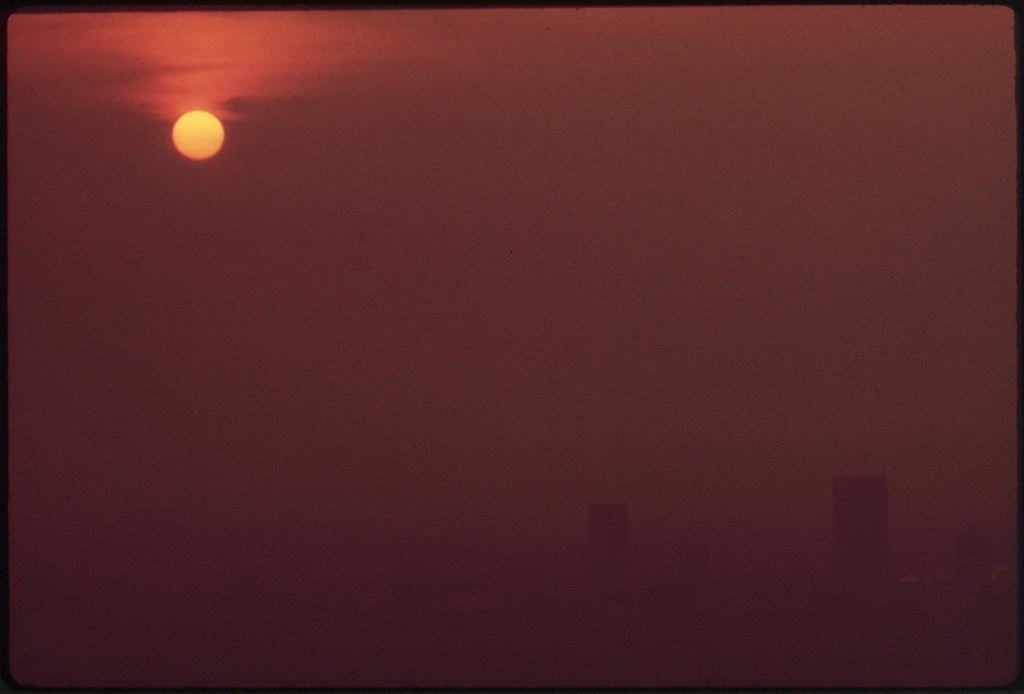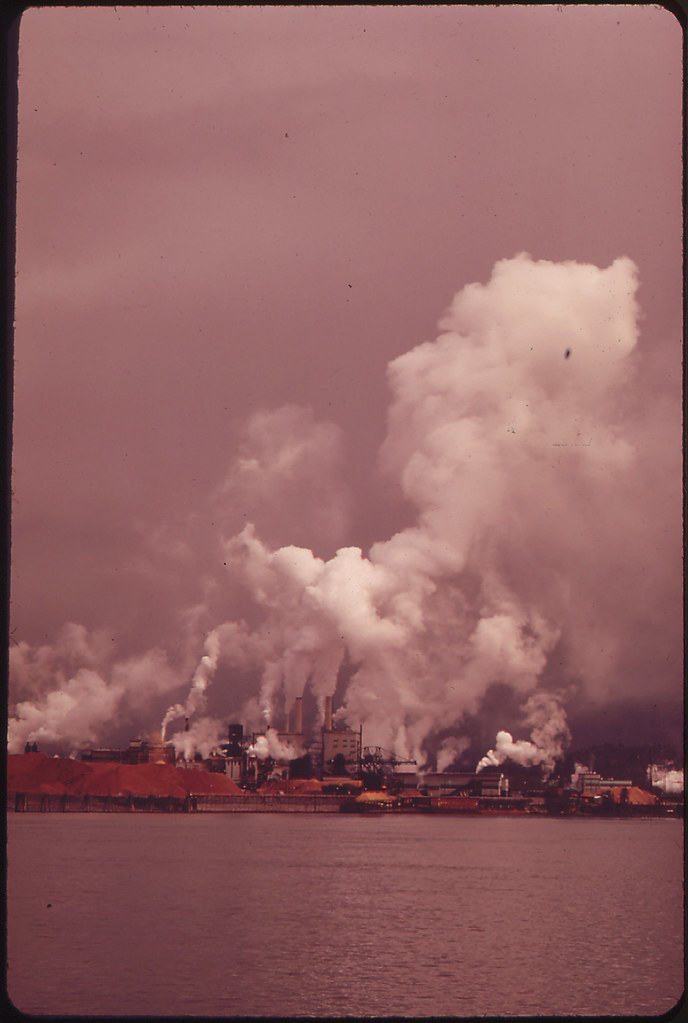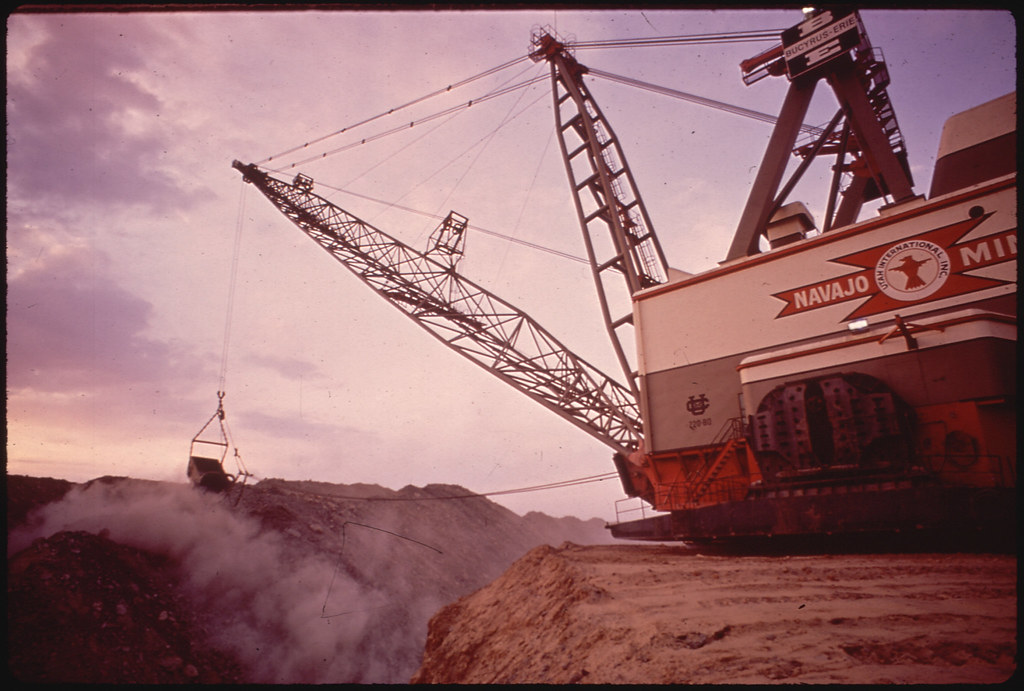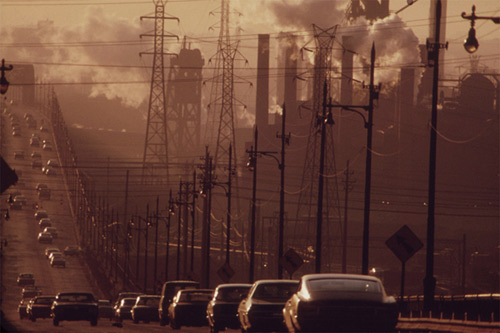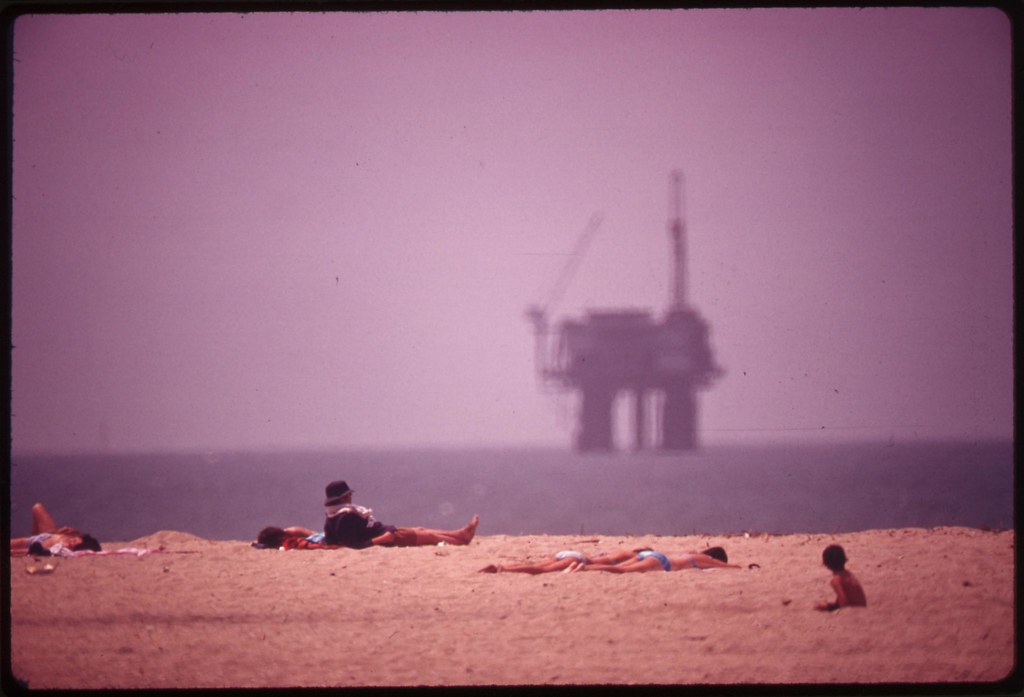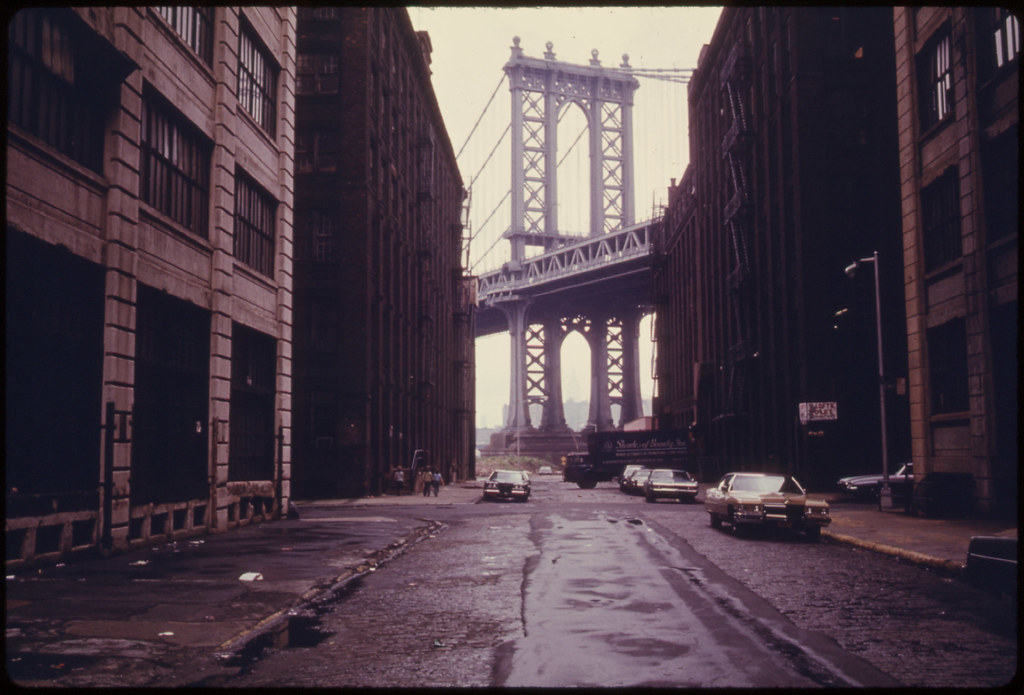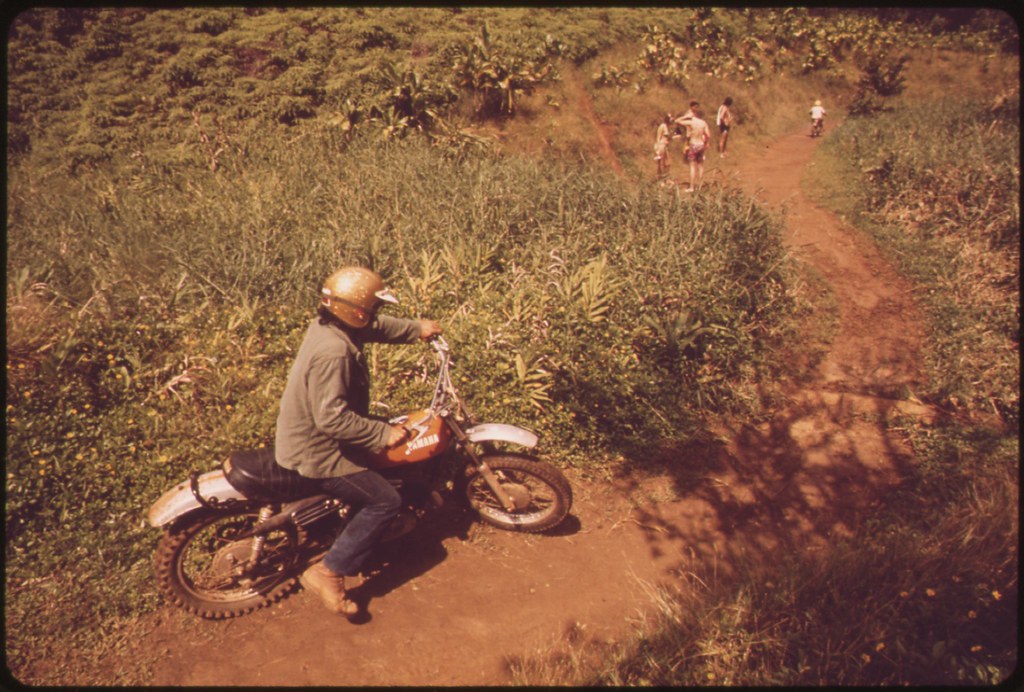Some words for Episode 42- EPAnybody?

Photo: Courtesy US National Archives
EPAnnoying: Why is the EPA ruining our fun?
Since its inception in 1970, the EPA has been a contentious organization, both for industry and for consumers. On one hand, the Agency seeks to improve the quality of life for Americans and restore natural resources. On the other hand, their aims and programs sometimes butt heads with the desires of the public and the progression of industry when it comes to overlapping environmental issues.
In Episode 42 we set out to research the beginnings of the organization and its founder, in order to understand it better as it relates to the issues and policies of today.
Let’s do that now by stepping back in time and beginning our journey…
Early in January of 1913, a little boy named Richard was born in Yorba Linda, CA. Little Ricky’s parents were Quakers, and as such, he was brought up in the evangelical Quaker manner, which refrained from dancing, swearing, and drinking… basically all the fun stuff.
As a student he excelled at sports but also liked his debate team and class politics. Every morning at 4 a.m. he would get up and drive into Los Angeles to pick up local fruit, and bring it back to his family store to wash and display it before heading to Whittier High School to start his day as a student.
After high school, Richard, now a bright young adult, headed to Duke University before returning to Whittier to begin work at a law firm. He would become a full partner a year later.
Apparently lawyers are good actors too, as he was cast in a local production called the Dark Tower when he met his future wife.
Things were looking up for Richard, now going by Dick. That is, until World War II. That’s when Dick joined the US Navy despite his strict Quaker values which prohibited it. After a very successful career in the US Navy, Dick turned to politics in the mid-Forties.
Running on an anti-communist campaign, Dick helped the Republicans of CA’s 12th Cong, Dist. take the seat away from the incumbent Democratic congressman. He effectively won his first campaign election.
Photo: Courtesy US National Archives
His political career took off and continued to rise throughout the 1950s. He beat out many Democrats and took a hard line against communism and liberal voting practices.
Dick performed so well that in 1952 he was voted Vice President. Soon after his election to the office he began travelling to the east, China in particular. He realized what a hotbed of industrial potential was laid out there, and focused his foreign diplomatic relations on the region, even after becoming President of the USA.
Although “Tricky Dick” Nixon took a step away from politics for a few years, he came back in ’68 and won his bid for President. He called on the “Silent Majority” of hippy-hating conservatives to elect him, and that’s just what they did. Despite his dislike for anti-war protestors, Nixon himself called for peace and an end to the Vietnam War. He also continued his aforementioned diplomacy with the East, and visited China in 1972.
He recognized that China had a wealth of labor in its population, and was willing to overlook the fact that Chairman Mao was a communist autocrat. Nixon had run on anti-communist platforms for his whole career so far. I guess that’s why they called him “Tricky Dick”. He didn’t focus on China because he was thinking of outsourcing every possible job and manufacturing process to their artificially cheap workforce… that would come later from the industries and capitol groups themselves, trying to make bigger profits at the expense of American workers’ jobs.
No, Dick was generally concerned with keeping the peace with the 120,000lb apes in the room – Russia and China, who were basically the friendly communists at the table. Meanwhile, in Latin America, South East Asia and the Middle East, the little commie apes were running amok in their own back yards, and threatening to throw a monkey wrench in the whole delicate works.
Nixon was naturally suspicious of Cuba, and was weary of Russia’s cooperation with the island nation. Without upsetting Russia, Nixon wanted to expel communism from Cuba. He probably wanted to put outboards on the whole Country and zip it over to the Baltic Sea where it would’ve been more welcome.
In Chile, things also conveniently worked out for the Nixon administration when Marxist ruler Allende was killed by the dictator Augusto Pinochet.
Then there was the Middle East, and the beginning of where our story as fossil fuel guzzlin’ motorheads takes root….
President Richard Nixon wasn’t just running around making amends with communist nations and pissing off smaller communist countries for the fun of it… During the 1950s, the Red Scare was a real thing to the general public, much in the way that global climate change and terrorism have been worrisome issues for many countries for the past few decades.
Photo: Courtesy US National Archives
To end the Vietnam War, Nixon had to confer with the backers of North Vietnam – namely Russia and China. Likewise, those countries had to negotiate with the USA in order to end the proxy wars that had started all over the world, basically in favor of one socio-political ideal over the other.
This extended into the Middle East, since Russia had strong ties to the Arab world as an oil customer and general supporter of Egypt and Syria, while the US backed Israel, Saudi Arabia and Iran. There was a war going on in the Middle East that the USA and Russia were heavily involved in via this proxy fighting strategy, and Russian-backed troops started it all by attacking Israel.
While the two superpowers were working out a truce on paper, the Israelis were busy kicking ass and taking names. They finally won, and the OPEC countries decided that there was more than one way to win a battle.
They stopped selling crude oil to the USA, and the ensuing oil crisis of ’73 stopped America in it’s tracks – quite literally.
Although conservation and the environment had not been a topic of discussion during the election of 1968, the public had the issues on its mind. Nixon saw the interest take form when the first Earth Day was started in April of 1970. Realizing that there was an opportunity to be proactive on the subject, Nixon announced the establishment of the EPA in June of that year.
Other acts and organizations that sought to make the American quality of life a little bit better soon followed. There was the Clean Air act, the National Environmental Policy act, the formation of the Occupational Safety and Health Administration and the Clean Air act. Other things that affect us as riders took hold as well, like the federalization of Medicaid and some healthcare reforms that focused on support of Health Maintenance Organizations (HMOs) and both private and state-run health care plans based on income and cost sharing. If you’ve crashed or been in an accident lately, your work or private insurance has no doubt paid for your treatment and recovery.
When the Oil crisis began in late 1973, it really exacerbated the already complex political and social landscape that enveloped America at the time. This cake has so many layers that we can’t eat it all at once, so I’ll try to stick to the matters at hand and the vestiges of policies that still haunt us today.
Photo: Courtesy US National Archives
With the formation of the EPA and enactment of clean air policies a couple of years prior, the oil crisis should have been a blessing in disguise. Instead, it was a crippling nightmare. This was a chance to reduce our reliance on foreign oil and to initiate projects in other technologies, such as electric vehicles and hydrogen fuel cells. During my research for the Dale in episode 38, I saw articles about Volkswagen’s hybrid gas/electric van. I’ve also heard legendary myths about the solutions of the time: One claims that Volvo had developed a car capable of 70mpg, but by the time it was ready for testing, the oil embargo had already ended, and the big oil companies weren’t going to let their cash cow go to pasture just yet. There was another rumor about the Meyers hydro engine that ran on water. Apparently the government snapped up the patent and Mr Meyers wound up face down in his soup shortly after. I only heard about these in my early 20s from some crazy acquaintance, so I don’t know if the names or facts are even real.
All I know for sure is that the crisis exposed a gaping hidden wound at a time when the country -and world for that matter- were already on shaky ground.
Without digging our forks too deep into the layer cake of history, it’s important to understand that the oil crisis and the solutions to foreign oil dependency were secondary actions to the greater game of political chess that was unfolding on the world stage.
In an effort to curtail oil consumption, the Nixon administration instituted a National 55 MPH speed limit. States had set their own limits previously, and although they grumbled, western states with much higher speed limits complied, or else they would lose their funding and approval for DOT projects. Along with the 55 MPH speed limit, Gerald Ford’s administration would later impose fuel economy standards, which I assume were the impetus for today’s CAFÉ standards.
Although the left and most Democrats hated Richard Nixon, politicians from all walks of life supported the creation of the EPA. There were some serious problems facing the nation’s cities, towns, tribes, and natural areas.
Photo: Courtesy US National Archives
Today the EPA is seen as the big bad ape in the room, punishing groups like Harley-Davidson, Volkswagen, and the motorsport community in general. In actuality, when it was established there was a serious need for health and safety improvements for both workers and communities dealing with pollution, environmental destruction, worker safety, and depletion of natural resources.
There are several media portrayals about the status and policies of the time. Movies like Prophecy (1979) and Soylent Green (1973) warn of pollution and overpopulation. Books like The Lorax (1971) and Wump World(1970) also warn about pollution and decimation of natural resources. Commercials featuring Iron Eyes Cody and his famous teary eye and songs like “Lord Mr. Ford” by Jerry Reed left a footprint in American culture and signaled a change in public awareness about the environment. The Documerica series of photographs is an interesting snapshot of the times and reasons that we should be excited for change.
One listen to episode 167 of The Dollop will change your mind about the past and the romanticized view of life in New York City around the turn of the 20th century. Until the 1980s, America was a fairly filthy place. Hell, if you live in Los Angeles, San Francisco or Manhattan, life can still be a smoggy or trashy mess depending on the day. Erin Brockovich wouldn’t have a career if it weren’t for crummy industrial practices and the deterioration of human health as a result. I think we can all agree that dumping toxic waste into community water supplies is a bad thing, but it’s harder to see some of the positive things that the EPA has done – especially if you’re on the end of the stick with the splinters in it.
Since I have lived in L.A., I have seen downtown more times than anyone in the 1990s even did. That’s not only because of EPA regulations, but CARB legislation as well. Yes, in CA. we have our own special little hell that’s probably much stricter than the EPA. Yet, as a result, the recent wild fires posed the most hazardous threat to air quality in contrast to vehicle and factory emissions. L.A. has some pretty crazy FOG laws and hazardous waste disposal rules. When I last checked it was illegal to remove FOGs from businesses in Los Angeles City because the city refined the grease for use in fleet vehicles. I don’t know if that still holds true (or ever did 100%).
In an interview with Marketplace.org the chairman of CARB, Mary Nichols, said that in 1975 a game changer called the catalytic converter was required on all cars sold in the U.S. According to her interview, automakers were reluctant to recognize that smog was real, and also to add cost to their vehicles, and then pass those costs down the line to the consumer.
“It’s like the stages of grief,” said Nichols. “At first you deny it. Then you fight against it. And finally you grudgingly accept it, embrace it and move on.” – Mary Nichols; article: Sarah Gardner via Marketplace .org
Photo: Courtesy US National Archives
Consumers as well as automakers were reluctant to give up their cars and dependency on oil. The key was, and always will be, technology.
As motors have become more and more efficient and smog compliant, cars are still way faster than they were back in the 1970s, 80s, or 90s. With exception to some supercars, most passenger vehicles have smaller and/or more efficient motors year after year while increasing horsepower. Motorcycles are doing the same, with Kawasaki releasing a beast called the Ninja H2R with a 998cc reactor producing 326hp! That’s only about 100hp less than the 5.0l 2015 Ford Mustang!!! That’s 5000cc putting out 435hp vs. 998cc putting out 326hp!!! If all those H2R numbers are too puke-inducing, there’s an EPA-compliant version that spits out 210hp! That’s still enough to stand your toenails on end.
It may be true that smog laws killed the Muscle Car Era, but at the same time, those cars would have evolved regardless. Given strict CARB standards coupled with EPA compliance, CA still has a pretty good Hot Rod bike and car scene. Cars have just been burning cleaner and getting a little quieter over the years. Even the Miller Brewing facility nearby doesn’t emit nearly as much steam (or what ever the white gas is coming from the stacks) as it used to. (Maybe a Pope died and a replacement was found?)
Other goals of the EPA include preservation of natural resources, but even more dangerous than the EPA are the lobbies and specialty groups that try to get public recreation lands closed for OHV use, or worse yet – booby trap them. On the flip side of the coin, to them WE are the specialty group that is trying to get lands opened so that we can essentially wreck them. Brappping all over natural terrain and leaving emissions droppings all over the place like a giant motorized cow isn’t exactly great for the environment. The finer point though, is that recreational users are usually the biggest conservationists when it comes to protecting the lands that we like to enjoy. Be it MTB riders working trails on the weekends, or SCORE race organizers trying to keep communities and racers alike safe during a risky competition, recreational users need a place to enjoy the outdoors. Therefore we see a need to find a balance for use vs. the alternative – being shut down altogether.
At any rate, the EPA isn’t all bad, and despite differences in individual interests, the environment is a serious issue that everyone can agree needs to be preserved and improved upon. If we still operated like we did in the 1940s, America would look more like India or China does now. Most Immigrants in eastern Los Angeles county from China or the surrounding region often still wear masks on their faces out of habit. At one time, trash fires were so numerous in India that the country looked like that unpronounceable volcano in Iceland that blackened skies and halted air travel a few years ago.
Photo: Courtesy US National Archives
Concerning motorsports, groups like the AMA and SEMA are actually pretty powerful lobbies that help us to preserve and pursue the activities that we love today. They will also be there in the future, I’m sure. As a society, we are always changing and making advancements to our stuff… all stuff.
Cans with string between them were replaced by phones which were replaced by cordless phones which were replaced by cell phones, which some day may be replaced by a wireless communicator embedded in your tooth.
Motorcycles and cars went from heavy, slow replacements for horses to tools of transportation and changers of industry. Not long after their creation, competitions began. As long as there are wheels, there will be feats of speed and endurance. They won’t always be fueled by oil and petroleum. They won’t always be tests of speed and engineering based on combustion engines.
Solar and electric racecars have been around for a very long time now, and that’s not because of the EPA.
I vaguely remember reading an article in Car & Driver or Popular Mechanics right around 1999-2000 that stated that a certain percentage of cars sold in California had to be ZEV. The Ford Think City (basically a car made out of Little Tykes™ plastic) and the Honda Insight were shown at the San Diego International Auto Show and no one took the bait. While the Insight did sell in CA, it should have been named the ‘Unsightly’ because, despite it’s intentions, it’s looks really weren’t what people associated with the future… unless the future was a homely robot nerd. (I miss you t0b0R!)
Regardless, I think the government over estimated the power of the consumer. Companies invested billions into EV technology and design, but you can’t just roll out a car in a year. You also can’t force the public to buy cars that they don’t want or need (unless it’s the mid-2000s and those cars are Escalades on 22”s!)
Since then, California has implemented a tiered plan, and has given buyers and sellers incentives to go electric. There are state and federal tax rebates and you can ride dirty in the HOV lane if you have an electric or hybrid car. You can already do that on bikes, so… WTFC? J
In short, as the EPA has worked to clean the country up and restore some natural areas to their previous splendor, they are also influencing the state governments to do the same without government incentives.
California’s ZEV mandate is one such achievement. The previously mentioned tiered plan started in 1990. When the state realized that you can lead a consumer to an electric car, but you can’t make them drive it, they extended the mandate out to 2025. This was revised several times as the rollouts and lead times were missed by automakers.
According to the mandate, which has been adopted by 10 other states, 15 percent of the vehicles sold in the state must be a ZEV. That’s about one in seven. That’s a lot.
Needless to say, we’ve seen bikes become more and more efficient. Ride-by-wire is a thing on most bikes now. So are fuel injection and multiple engine mapping. There’s also a bevvy of traction settings and ABS capabilities controlled by multiple modules, ECUs and IMUs. The next logical step is E-Motorcycles.
Earlier this year, Paris banned older bikes and cars in the city at certain times. Other countries have had similar laws on the books for a while. It’s only a matter of time before air quality or the convenience of obtaining fossil fuels outweighs the ever increasing battery technology and clean air energy solutions.
We may be racing through a field of windmills on our E-bikes, but at least it will be quiet and peaceful.
If you want more information on the EPA, you can go to epa.gov. I found their historical site to be the least informative resource ever, but the main site has lots of current issues and give you an idea about how many areas the EPA involves itself.
Another great source about the EPA is the AMA. On the AMA’s website you can check out the Association’s discussions and involvement with the EPA and legislation that affects us as riders. The AMA is one of the most successful and informative lobbies that the motorcycling community has.
I hope you’ve enjoyed this article, and I hope that you stay involved with issues regarding the EPA and regulation or conservation wherever you live. Remember, if you enjoy it, don’t destroy it. Don’t litter. Don’t throw your oil in the drains. Don’t burn your old tires. Don’t bury your old bikes or old fluids underground. Don’t brappp until you crap. And don’t be scared to go electric when the time comes. Even my grandpa got off of that old steam cycle a while back. He didn’t even make a fuss when 2-strokes were banned. He followed Preston Petty’s example!
-Cheers
Sources:
http://www.theatlantic.com/technology/archive/2010/12/gallery-why-nixon-created-the-epa/67351/#slide1
https://en.wikipedia.org/wiki/Richard_Nixon
http://todayinmotorcyclehistory.blogspot.com/2015_01_02_archive.html
https://history.state.gov/milestones/1969-1976/oil-embargo
http://thedollop.libsyn.com/167-the-history-of-ny-sanitation-with-guest-ronny-cheing

